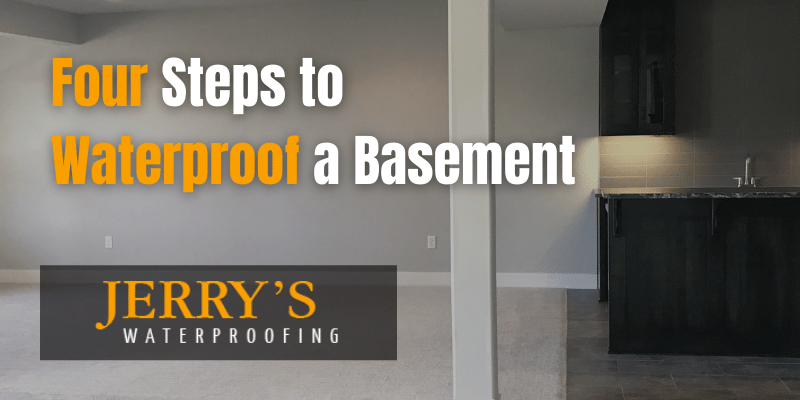
The first step to a dry basement is knowing when to get help with waterproofing. Let’s talk about the steps to take to waterproof a basement.
Steps to Waterproof a Basement
Some waterproofing steps you can do on your own, others should require professional help. Here are the primary steps you need to take to waterproof a basement:
DO A CRACK CHECK: Check both the interior and exterior of your foundation for cracks. Look for cracks in drywall. If you have window wells check for cracks around them (thoroughly!) Cracks aren’t always a sign of big problems, but it is good to have them inspected and repaired to prevent seepage or leakage into your basement.
Cracks can be a sign of larger foundation issues as well. So, while they may need to be filled, it’s important to have them looked at as well. You don’t want to fill them only to hide a much larger issue. Foundation repairs can be costly so catching them early can save you thousands of dollars in the long run.
EXTERIOR WATERPROOFING:
The first thing to do is consider exterior waterproofing. As a homeowner, you can do things to help the situation. Keep gutters clean and ensure downspouts are installed correctly. It is important to grade the soil around the home. As a result, water will move down and away from the foundation.
Professional help is recommended in some cases. If you use a professional, they may recommend digging around the foundation to install a waterproof membrane or other exterior waterproofing. Drainage can also be installed if needed. The job of exterior waterproofing is to keep water from getting into your basement in the first place.
ADD INTERIOR WATERPROOFING SOLUTIONS:
This could include a sump pump, battery backup sump pump, interior drainage, and a dehumidifier. Some homes and situations will require a sump pump. A sump pump would be advisable in a home with a finished basement. Additionally, we would recommend that a sump pump be installed in homes with past water problems or if you live in an area with high groundwater.
Other interior waterproofing solutions depend on your specific situation, but 3 common approaches include installing an interior drainage channel either:
- Above the concrete slab
- Within the slab edge
- Beneath the slab
SEAL BASEMENT WALLS AND ADD A VAPOR BARRIER: Sealing basement walls hardens them and makes them less porous. You can look for a cement-based sealant. Have a team such as Jerry’s Waterproofing install a waterproof membrane or vapor barrier to keep water at bay.
It can be hard to determine what sealant or barrier to use. When in doubt, contact the professionals to see what is right for you. This is especially important when you see multiple issues with your concrete such as cracks or masonry problems such as spalling.
Your Home is Unique
Each home is unique and the waterproofing solution for that home is also unique. You can help prevent water problems in your basement. To waterproof a basement correctly, however, we recommend asking an expert. Got questions? We’ve got answers. Give us a call to discuss how to waterproof YOUR basement today.



